Hobbs rejects Republican groundwater bill, says rural Arizona needs a better plan
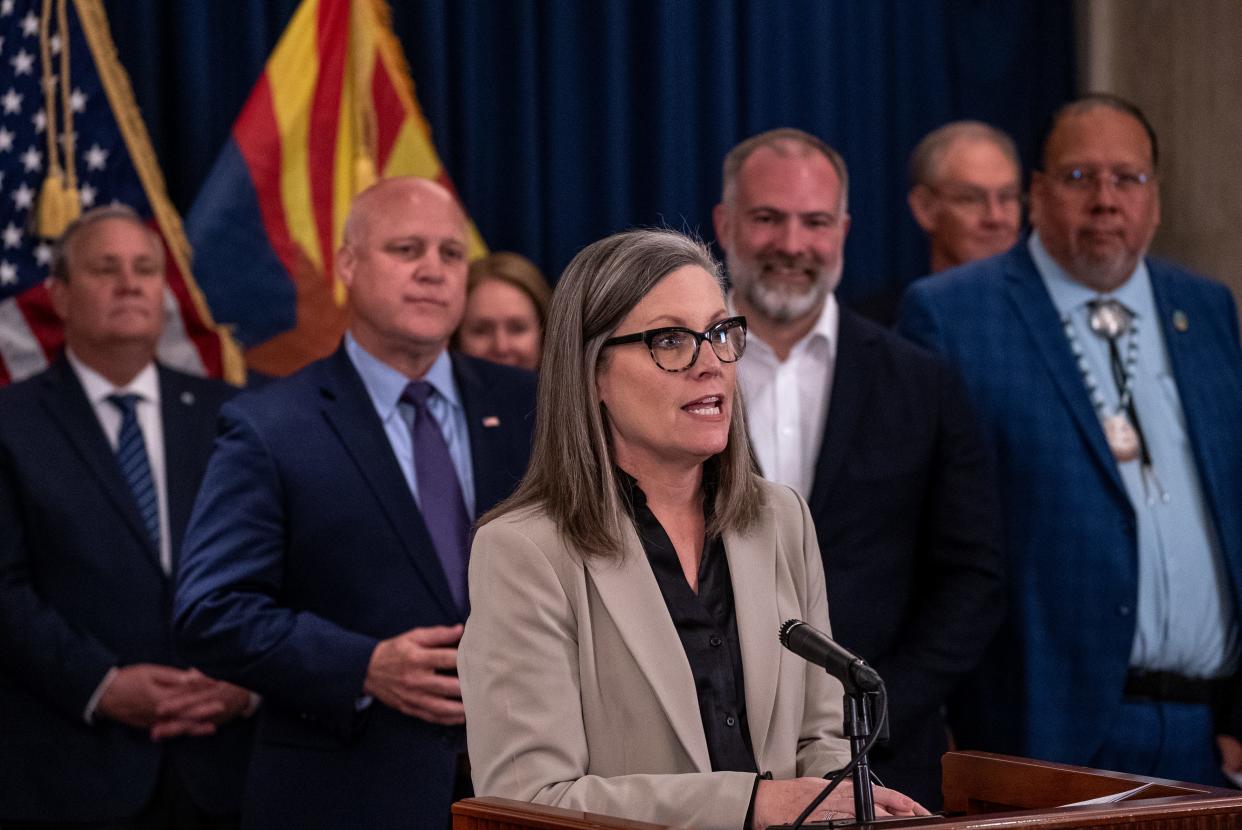
TUCSON — Gov. Katie Hobbs said Wednesday she would reject a Republican-sponsored rural groundwater bill approved by the Arizona Senate because she does not believe it would actually protect water supplies for small communities.
Speaking at a University of Arizona water conference, the Democratic governor said she will not sign Senate Bill 1221 if the House approves it. That would mean farm interests who backed the bill may have to compromise before the legislative session ends or face the prospect of her administration imposing stricter rules on some areas.
“Make no mistake,” Hobbs said at the annual conference of the university’s Water Resources Research Center, “while proponents claim (the bill) will give rural communities a voice, it will silence them instead. It sets up a convoluted process that would make it nearly impossible for our communities to manage their groundwater.”
As an alternative to new legislation, the Arizona Department of Water Resources has begun discussions to create a Gila Bend Active Management Area using the tool that a 1980 groundwater law established for requiring developers to prove long-term water supplies exist before building homes. That's a process that some farmers and others consider too heavy-handed for rural Arizona.
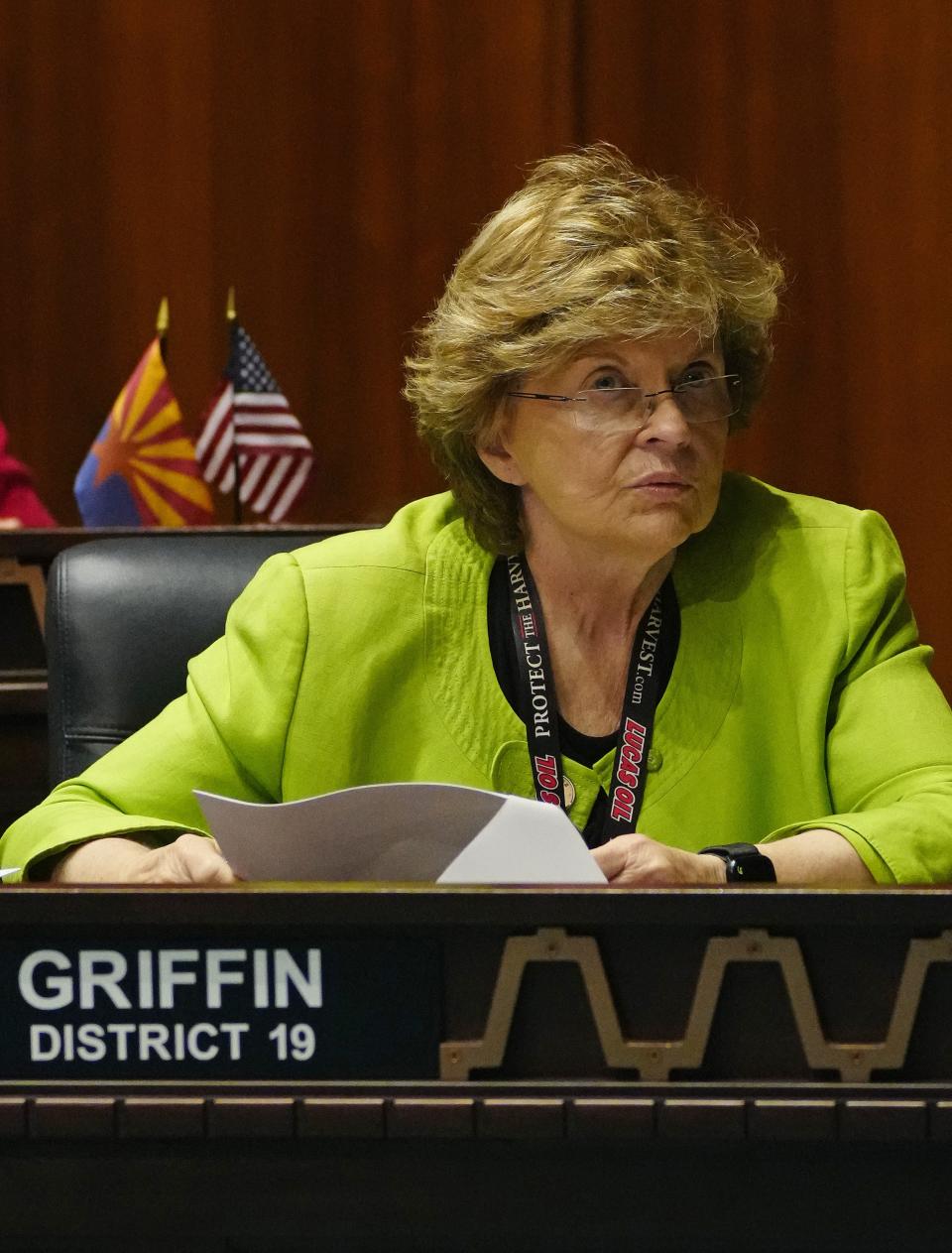
SB1221, sponsored by Sen. Sine Kerr and Rep. Gail Griffin, would allow county supervisors in rural Arizona to seek a new type of regulatory zone for their aquifers called Basin Management Areas. If they unanimously agree to do so, they would create a council of partly elected and partly appointed members, who must also be unanimous in their support for regulations affecting that zone. If they agree, they could put the basin on a water budget that cuts use by up to 10% over 10 years.
The governor and allies have sought potentially stronger protections, and they say the approach laid out in SB1221 sets up too many barriers to any action to keep rural wells from running dry.
Hobbs argued that the bill would leave Arizona with the status quo, with most of rural Arizona open for unrestricted groundwater pumping, “where out-of-state corporate farmers come from around the world to take advantage of our aquifers and pump unchecked amounts of groundwater, while small farmers and local communities get their water sucked out from under them.”
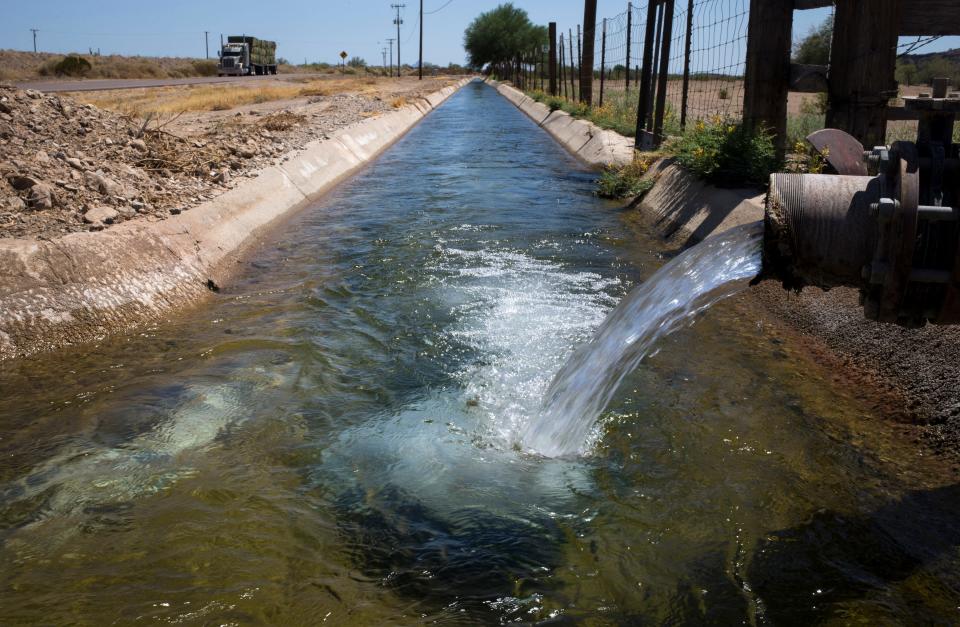
How Arizona can regulate groundwater use
Arizona lawmakers in 1980 passed a groundwater protection law that applies primarily to urban areas including Phoenix, Tucson, Prescott, and Pinal and Santa Cruz counties. It gives the Department of Water Resources authority to set limits on development and pumping to prevent continued “mining” of groundwater at unsustainable levels.
Local voters can also approve such regulation zones, known as Active Management Areas, as voters in Douglas did two years ago. However, groundwater pumping is largely unregulated in most of rural Arizona, a compromise that former Gov. Bruce Babbitt and the framers of the 1980 law say they had to accept to get it passed.
In recent years, aquifers, including those supplying Kingman, Douglas, Willcox and Gila Bend, have seen water tables drop under the strain of pumping, often by industrial nut, alfalfa and dairy operations that have moved in. Hobbs terminated the lease of one such pumper, Fondomonte, which was drawing water from under state land in Butler Valley, west of Phoenix, to supply forage to dairy livestock in Saudi Arabia.
Some local officials, including those in Kingman and Mohave County, have sought new regulatory options that could consider local needs without what they consider the inflexible, state-driven rules of an Active Management Area. Republican lawmakers have so far blocked their preferred approach.
Last year, Hobbs convened a water policy council to create a new regulation option tailored to rural communities, but legislation to codify its recommendations has yet to receive a hearing.
Arizona Farm Bureau President Stefanie Smallhouse has backed SB1221 as a better option than the governor’s approach, which she called a “top-down” process that would run through state appointees without allowing local flexibility.
“Our bill incudes multiple options for local stakeholder engagement,” Smallhouse said.
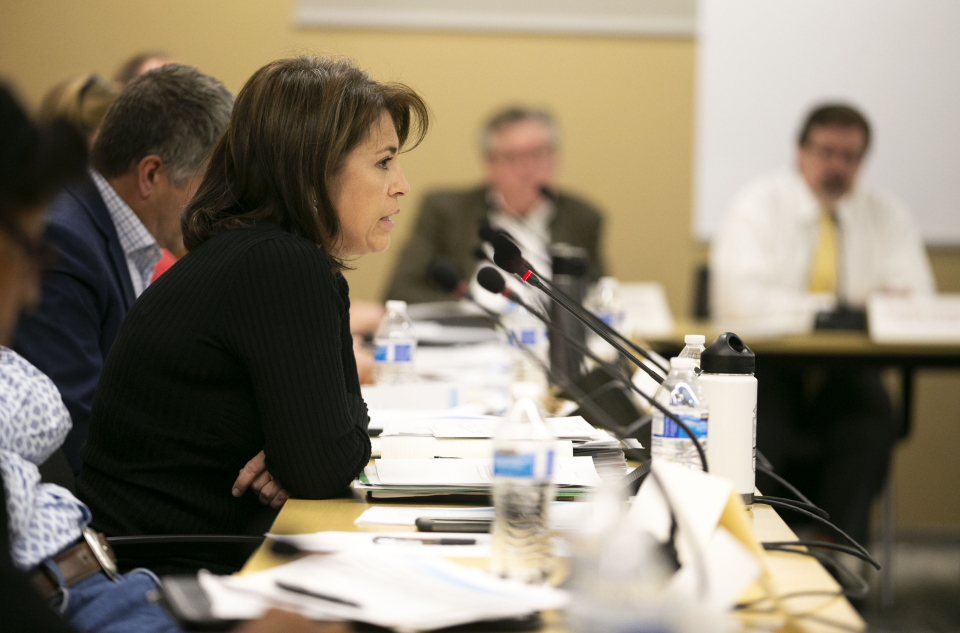
While critics believe the bill’s required unanimity of both county supervisors and local water councils would kill efforts to reduce pumping, Smallhouse said, “I disagree that creating a process that is deliberative is bad.”
Where the governor’s approach would allow for a basin council to set conservation requirements or reductions in cuts, SB1221 would cap a basin’s overall water cuts at 10% over 10 years. That’s important in creating certainty for farmers who might not be able to get needed loans if lenders are unsure whether they’ll have sufficient water to keep farming through the life of the loan, Smallhouse said.
“We have to be able to get both short- and long-term loans in order to stay sustainable,” she said.
Smallhouse said she remains hopeful that discussions will continue to shape legislation that can pass and get the governor’s signature. Hobbs didn’t just say she won’t support the bill as currently written, Smallhouse noted, but that she’s optimistic another version remains possible.
“I agree with her in the fact that we have shared goals because we do,” Smallhouse said. “I’m totally focused on her optimism.”
The Farm Bureau withdrew from Hobbs' water council last year, citing differences in priorities.

GOP lawmaker says rural leaders should regulate their own water
One critic of SB1221 likewise said she’s hopeful continued talks can shape successful legislation.
“Hopefully, people are still talking,” said Haley Paul, policy director for Audubon Southwest and co-chair of the Water for Arizona Coalition. "I feel like this is a moment that people from all sides acknowledge that we have an issue."
The coalition has opposed SB1221 on grounds that its multiple, unanimous approval steps make any limits on rural pumping unlikely and that even if it does happen, capping reductions at 10% may be insufficient to save some aquifers. The conservation goal “probably needs to be higher,” she said.
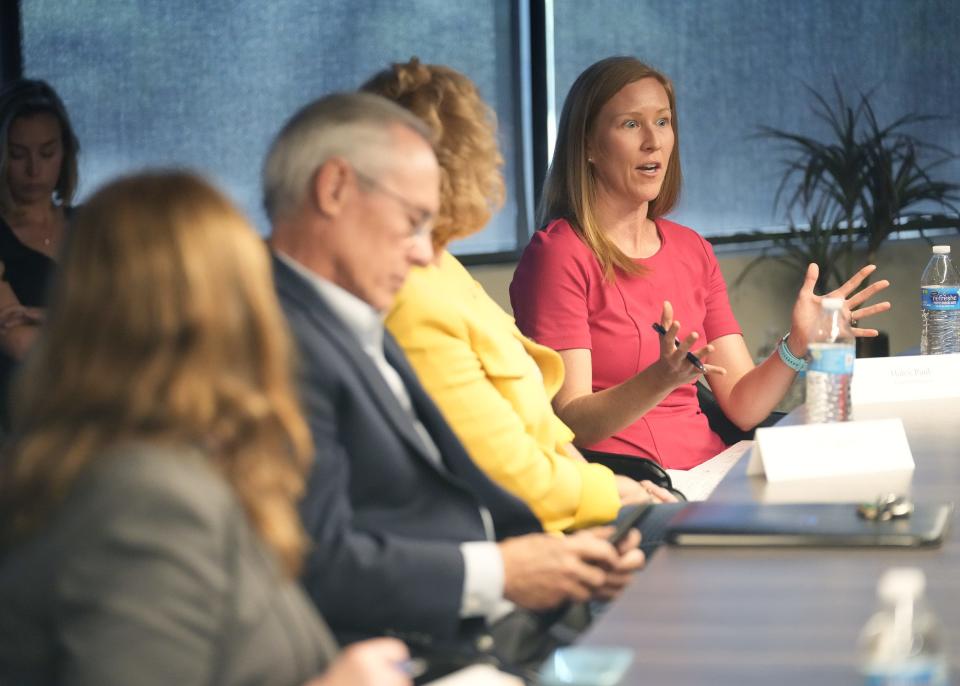
Asked about what would happen if no legislation passes and wins her signature this session, Hobbs noted the authority that the 1980 law gives her and the Department of Water Resources to create new Active Management Areas.
“We’ll use that tool if we need to,” Hobbs said.
Kerr, who sponsored SB1221 in the Senate, emailed a statement to The Arizona Republic saying she would continue to meet with the governor and Democratic lawmakers to seek a compromise "that won't hurt rural Arizonans' livelihoods, their local economies, or their groundwater supply."
But Kerr, R-Buckeye, called the governor's threat of imposing Active Management Area rules on rural Arizona "weak leadership."
“For the Governor to recklessly say SB 1221 is a convoluted process and won’t protect our groundwater is a red herring meant to justify her proposal of big government overreach to regulate groundwater," Kerr said in her statement. "The alternative of having an unelected bureaucrat, located miles away in a big city, who is not privy to the unique needs of these rural communities, dictate what should and should not be done with rural Arizona groundwater, demonstrates more of a dictatorship rather than a democratic process.”
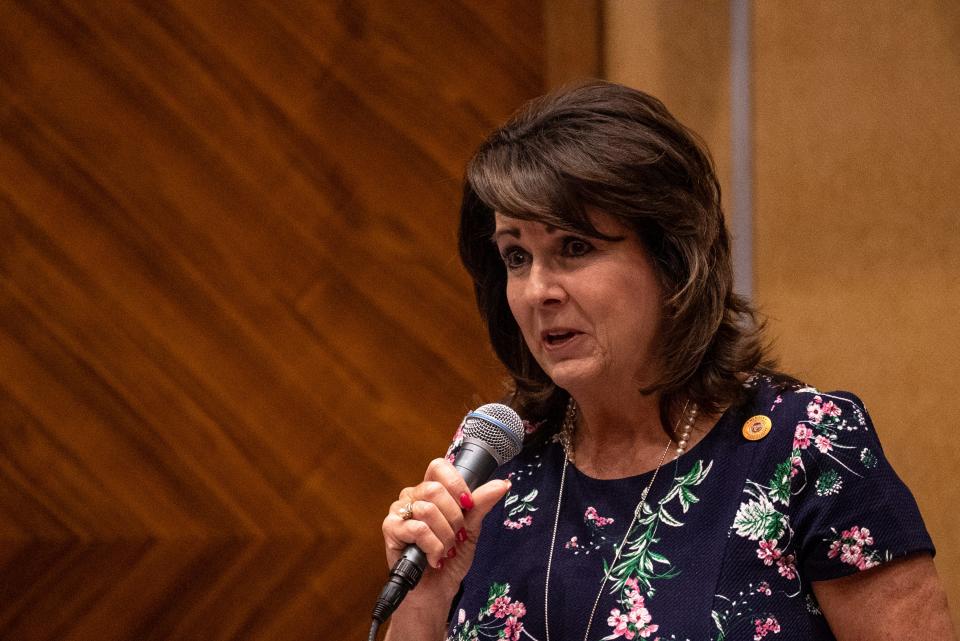
Griffin, who cosponsored Kerr's legislation in the House, did not immediately respond to a request for comment.
Some farmers are wary of the governor's threat of imposing Active Management Areas, an option they see as less flexible or responsive to local conditions. For instance, it could lead to a state-run plan that reduces a farmer’s pumping without offering credit for conservation that the farmer already has undertaken. They want another option that relies on a local council for conservation planning.
Absent new legislation, though, Hobbs said her administration must act to protect rural groundwater and the state’s reputation as a place for sustainable growth. She noted the public-relations hit that Arizona took in national media last year when her administration released a report finding that some suburban Phoenix areas would be short of water in a century under current growth projections.
Some news reports failed to emphasize that the shortfall would only be 4%, she said, and only that much if the state doesn’t act to prevent development in those places unless other water sources become available.
“We have time to solve it,” Hobbs said.
Hobbs is optimistic about Colorado River talks, Gila River Gov. Lewis has concerns
In her speech, the governor also lauded a proposal for managing future shortages on the Colorado River that Arizona, California and Nevada jointly presented to the U.S. Interior Department last week.
That plan subjects the three states to reductions in water use under certain river conditions but also seeks to impose reductions on upstream states if reservoirs approach critical levels. The four upstream states use less water and have, so far, insisted that the three Lower Basin states must shoulder the needed cuts to balance the system.
On this issue, too, the governor said there’s time to solve the crisis. The Interior needs to adopt new shortage-sharing guidelines by 2026 when the existing rules expire, and negotiations between the states are continuing.
“We have a long path ahead of us,” Hobbs said, “and we still need to see commitments from the Upper Basin to equitably share in the responsibility of protecting the Colorado River, but we have made tremendous progress and I am confident that through collaboration and perseverance we can find solutions that ensure the river remains resilient for generations to come.
Even within Arizona, though, key players are not on board with the Lower Basin’s proposal. As The Republic reported last week, the Gila River Indian Community, which has contributed to the state’s water conservation efforts on a voluntary basis and with federal compensation, opposes the plan because it would enforce cuts across all users within the three states without protecting tribal water rights.
Any effort to restrict tribal rights must come with either compensation or an as-yet-unidentified alternative water supply, Gila River Gov. Stephen Roe Lewis told reporters on Wednesday.
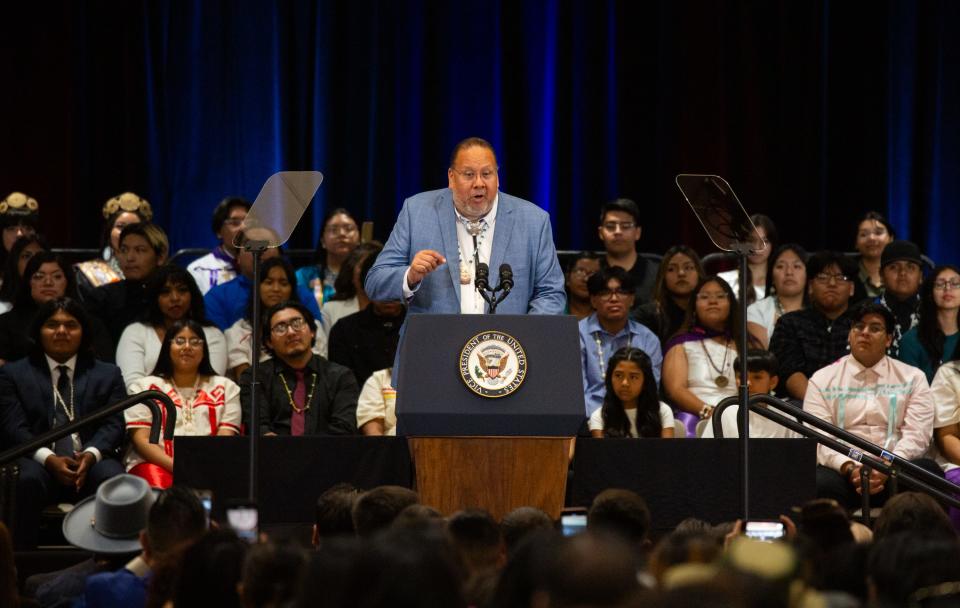
Lewis suggested that the Butler Valley groundwater basin, where Hobbs terminated Fondomonte’s pumping, could serve as a storage basin for such an effort. He did not offer further details but said his community will submit its own plan in coming weeks for federal officials to consider.
“Tribes cannot and will not bear the brunt of these reductions,” Lewis told conference attendees in his remarks after Hobbs spoke.
Nonetheless, Lewis said his community's relationships with the governor and state water officials have "never been stronger," and he expects to work with them to create a plan that respects tribal water rights.
Brandon Loomis covers environmental and climate issues for The Arizona Republic and azcentral.com. Reach him at [email protected].
Environmental coverage on azcentral.com and in The Arizona Republic is supported by a grant from the Nina Mason Pulliam Charitable Trust.
Sign up for AZ Climate, our weekly environment newsletter, and follow The Republic environmental reporting team at environment.azcentral.com and @azcenvironment on Facebook and Instagram.
You can support environmental journalism in Arizona by subscribing to azcentral.com today.
This article originally appeared on Arizona Republic: Hobbs says rural Arizona needs better groundwater protections
